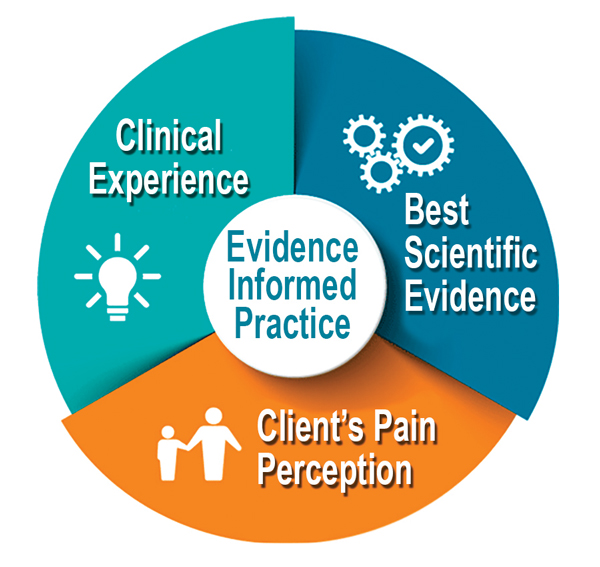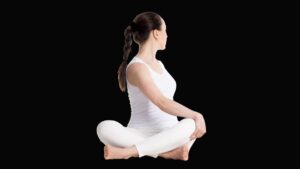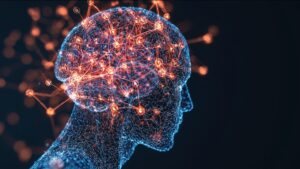Myoskeletal Alignment Techniques (MAT)
From low-back and neck pain to stiff hips and headaches, a wide range of pain issues have many massage therapy clients searching for lasting relief. These clients—especially those whose pain is chronic—want someone to resolve the root cause of their suffering. This is the mission of Myoskeletal Alignment Techniques (MAT), a form of manual therapy that uses scientific evidence about the body and brain to inform the practitioner’s approach to musculoskeletal problems. As a modality steeped in science, MAT continues to evolve along with the latest research on pain.
Generally speaking, MAT relies heavily on strategic deep tissue and muscle activation techniques for posture correction and pain relief. MAT training teaches massage therapists how the musculoskeletal and nervous systems work together, what problems lead to pain, and how to restore optimal balance and performance using guided assisted stretches and hands-on techniques. With a thorough understanding of the physiological and psychological mechanisms of pain, massage therapists can better evaluate and address root causes rather than simply soothing symptoms.
Personal Injury Spurs Professional Growth
For a better understanding of MAT, a quick look at my own massage therapy background and the circumstances that led me to develop MAT in the first place is helpful.
I met Ida Rolf at Esalen in the 1970s and was inspired to start my massage therapy career in the early 1980s as a certified Rolfer. A decade later, I became interested in osteopathic massage therapy following a clumsy judo fall that resulted in a traumatic cervical spine fracture. In an attempt to better understand the spinal biomechanics of my own injury, I took a deep dive into the neurologic relationship of muscles and joints, which eventually led me to post-graduate study with legendary researcher and professor Philip Greenman, D.O., at Michigan State University College of Osteopathic Medicine. In my private practice, I began to blend the joint neurology principles I was learning from Dr. Greenman with the deep tissue work I had learned from Ida Rolf. The success of this combination was remarkable, and I was motivated to share it with my colleagues and other professionals interested in noninvasive pain management.

Muscle Alignment Techniques: Getting to Pain’s Source
Pain is the body’s call for attention, and MAT helps massage therapists listen before developing a massage therapy treatment plan, starting with a thorough intake interview, as well as appropriate postural and movement assessments. Catching strain patterns before they become chronic pain patterns is a key component of MAT, and proper assessment helps practitioners pinpoint where a brain-body disconnect may be leading to strain or pain.
For many clients, chronic pain arises from common imbalances and dysfunctional patterns in the musculoskeletal system and can be relieved with a combination of skilled massage therapy and intelligent corrective exercises. However, in order to select the right techniques and exercises, the therapist must have a full-picture understanding of various body systems and how they are all interconnected. Without a true understanding of how these brain and body systems work together, most common musculoskeletal complaints are incorrectly assessed. From the anatomy of bones, connective tissues and nerves to the neural signals that trigger muscular contraction, MAT training gives practitioners the wide perspective necessary to effectively treat pain. (Image 2.)

How MAT Works: Treating Clients as Individuals
At its foundation, MAT uses contract-relax techniques to help the nervous system feel less threatened by what has been identified as a painful movement. Active pain-free therapy signals the brain that the previously painful movement is now safe. By doing this repeatedly, the nervous system will often start to disassociate the movement from the pain. In essence, the goal of MAT is to bring as much “good news” to the nervous system as possible. Although various MAT techniques are typically interwoven during a session, massage therapists should choose techniques appropriate for the needs of the individual client. For example, a rotator cuff injury might require a combination of nerve flossing and tendinopathy techniques in addition to specific home retraining exercises.
In every session, the goal is to address the client’s condition based on their immediate physical and emotional state, never pushing beyond where their bodies or minds want to go. The process is always fluid, creative and interactive. By offering assistance to the body’s natural healing process, massage therapists help the client’s brain correct the underlying causes of pain and discomfort.

How Myoskeletal Alignment Techniques (MAT) May Help Clients:
- Relieves chronic pain contributing to weak posture.
- Releases trapped nerves from tight muscles, joints and ligaments.
- Corrects atrophy, weakness and muscle amnesia in head-forward postures.
- Addresses breathing disorders caused by a drooping ribcage.
- Lessens pain sensitivity through graded-exposure assisted stretching techniques.
- Eliminates protective muscle guarding due to joint fixations.
- Improves sleep by lowering sympathetic nervous system tone.
- Creates dynamic, confident posture.
- Corrects sports-related tendon and joint injuries.
- Enhances athletic performance through hands-on proprioceptive training.
- Changes the brain’s mind about pain through targeted home exercise advice.
About Erik Dalton
Erik Dalton is a lifetime member of the International Association for the Study of Pain and an affiliate faculty member at Indiana State University Department of Applied Medicine and Rehabilitation. In 2012, Indiana State became the first major university in America to offer Dalton’s Advanced Myoskeletal Massage Therapy program as a minor degree in massage. That same year, Dalton received the One Concept Lifetime Achievement Award. In 2007, he was inducted into the Massage Therapy Hall of Fame. In addition to writing and teaching, Dalton has maintained a private manual therapy practice in Oklahoma City, Oklahoma, for more than 40 years.









